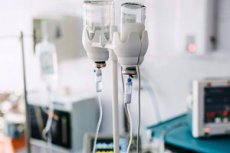Medical expert of the article
New publications
Methane vapor poisoning
Last reviewed: 29.06.2025

All iLive content is medically reviewed or fact checked to ensure as much factual accuracy as possible.
We have strict sourcing guidelines and only link to reputable media sites, academic research institutions and, whenever possible, medically peer reviewed studies. Note that the numbers in parentheses ([1], [2], etc.) are clickable links to these studies.
If you feel that any of our content is inaccurate, out-of-date, or otherwise questionable, please select it and press Ctrl + Enter.

Methane is a common household gas that is odorless and completely transparent. It is used in the kitchen for thermal processing of food, and at automobile gas stations as a cheap fuel. Methane is toxic and lighter than air, so in open spaces it rises upwards without entering the lungs. The risk of exposure to the gas increases significantly in enclosed spaces where the substance can accumulate.
Poisoning occurs by inhalation of methane with a concentration of 25-30%. The gas easily penetrates the blood-brain barrier, affecting the brain, depressing the respiratory organs and the CNS. This leads to oxygen deprivation, and without timely medical care and death.
Symptoms of the methane poisoning
There are several stages of household gas poisoning, which differ in severity and symptomatology:
1. Light
- Headache and dizziness.
- Tears.
- General weakness and drowsiness.
- Discomfort in the heart area.
2. Medium
- Movement disorder.
- Heart palpitations.
- Collapse.
- Depression of the central nervous system.
3. Heavy
- Damage to the cardiovascular system and brain.
- Loss of consciousness.
- Pulmonary edema.
- Asphyxia.
- Cardiac arrest.
The first sign of methane intoxication is headache and general weakness. Another obvious symptom of intoxication is chest pain and lack of coordination.
Treatment of the methane poisoning
The appearance of the above symptoms is a reason to seek immediate medical attention. Before the arrival of doctors, the victim should be taken out to fresh air. Also, if possible, shut off the gas (turn off the burners, etc.).
The victim is asked to assume a horizontal position and an ice compress is applied to the forehead. If there is vomiting, the patient is turned on his side to prevent choking on the vomit masses. If breathing is infrequent and intermittent, artificial respiration is performed.
Specialized treatment in a medical facility for methane poisoning may include the following:
- Oxygen therapy: The victim may be connected to oxygen therapy to ensure adequate oxygen levels in the blood and tissues, especially if the poisoning has resulted in acute hypoxia (lack of oxygen).
- Respiratory and cardiovascular monitoring: The victim will be continuously monitored with special medical devices to assess his/her breathing, heart rate, blood pressure and other important indicators.
- Symptomatic treatment: Depending on the symptoms and complications resulting from methane poisoning, various symptomatic treatment measures may be undertaken. For example, acute hypoxia may require the use of mechanical ventilation (ventilation), arrhythmias may require the use of antiarrhythmic drugs, etc.
- General supportive therapy: The victim may also receive general supportive therapy to maintain vital body functions such as stabilizing blood pressure, optimizing electrolyte balance, etc.
- Monitoringlong-term effects: In some cases, it may be necessary to monitor the victim for a long time after poisoning to identify and treat possible long-term effects, such as complications of the lungs, cardiovascular system, or nervous system.

